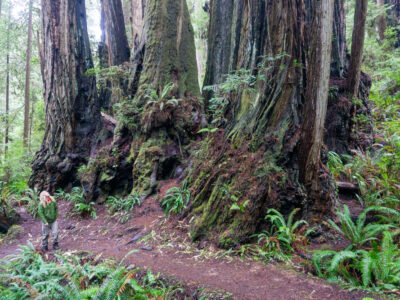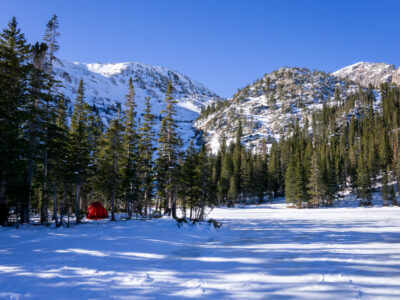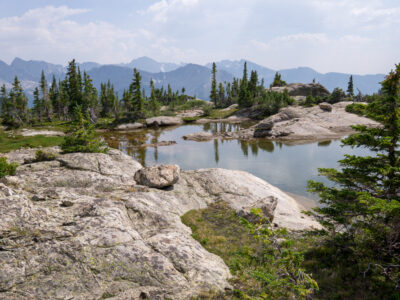23 Nov How to Get Over Fear of Wildlife
How-To
How to Get Over Fear of Wildlife
December 10, 2020
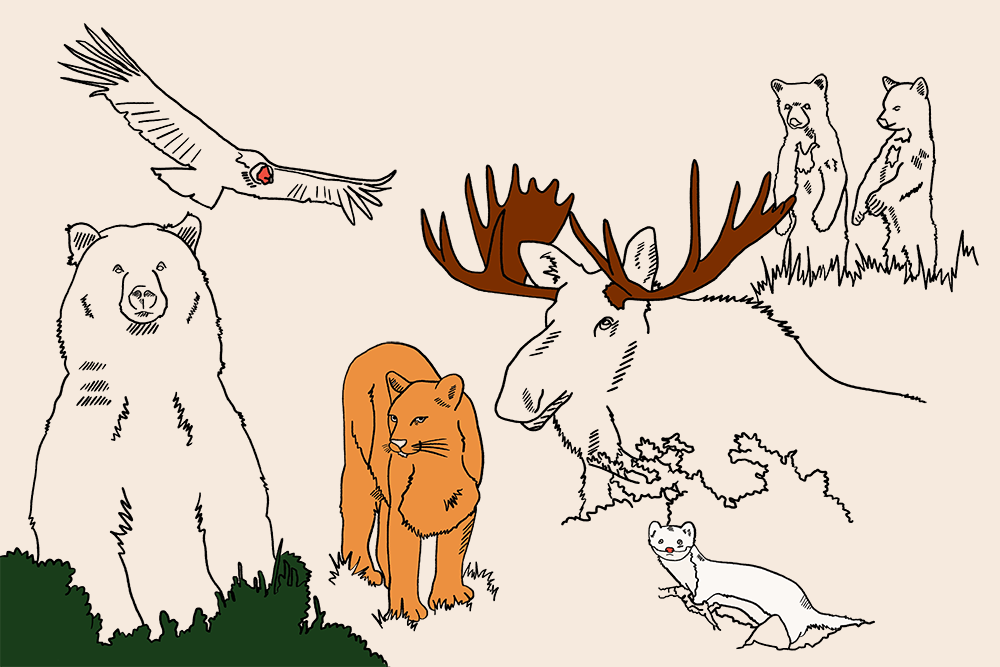
On our very first backpacking trip, I was convinced that a mountain lion was going to pop out of a bush and eat my face the entire time. We were backpacking in Big Bend National Park and the area our backpacking permit happened to be in, also happened to be the general location of a recent mountain lion sighting. I kid you not, I thought we were about to become dinner for the lion. Every rustle of every bush had me on edge, waiting for the lion. But he never showed and we had a great first trip.
Six years later, I don’t fret about wilderness friends at all. We do our research, gather up the gear we need, and head into the wilderness without all the terror that I had on our first trip. Keep reading for some tips on how to go from terrified to decently comfortable with the forest locals.
Also, if you’re looking for a couple trips where you’re likely to see some animals from a distance, here are a couple of my favorites: 1, 2, 3
Do your research
Gather as much information about the wildlife in your backpacking area as you can. The easiest way to find wildlife information is on a park’s website. For example, if you’re backpacking in a National Park, most of the parks have a tab at the top of their website labeled “Learn About the Park.” You can find all kinds of information in there about wildlife, park history, and news.
On the other hand, if you’re backpacking in a National Forest or State Park, you may have a harder time finding good information about wildlife. One way to do it is to Google your park name followed by the word “wildlife.” If you’re lucky, the park will have a page dedicated to animals; if not, you’ll have to keep looking. Sometimes, the park websites will have a page for hunting, which will give you some hints about the animals in the park in a round-about way.
If you can’t find information on the park’s website, the iNaturalist app and website is another good option for wildlife research. iNaturalist is an app where people upload photos of plants and animals they find as they’re exploring. What you end up with is a large collection of wildlife photos for any particular area. On the app, the first thing you’ll probably notice is that most of the pictures are of birds. If you filter out the birds and plants, you’ll get a decent overview of any major wildlife that may be lurking in the park.
After you know what kinds of animals you’ll be dealing with, it’s time to do some research on what to do if you see one. For example, many parks have a recommended distance that you should maintain away from specific animals. You should stay at least 100 feet from a bear, but you can cut that distance in half for a mountain goat.
Additionally, there’s different things you can do to assert dominance if you come across an animal. For example, if you see a bear, you should make yourself seem as human as possible by talking to it in low tones, making yourself look big by moving to higher ground, slowly waving your arms around, and keeping your backpack on for a layer of defense. The idea is that bears don’t want to attack humans so you should distinguish yourself from the bear’s usual prey. For more information about bear encounters, go here.
While hiking and at your campsite, the best thing you can do to keep any animal away is to make a bunch of noise. We usually yell a couple “Hey Bear!”s from time to time or we’ll have an obnoxiously loud conversation. Your noise will alert animals that you’re around and they’ll probably avoid you. If an animal doesn’t move away, it will at least know your general location and you will avoid startling it. A startled animal is way more likely to attack than a relaxed animal. Some animals even have “tells” for when they make be feeling on edge and more likely to attack. Keeping with the bear examples, bears often huff, grunt, and lay their ears back when they feel disgruntled and about to attack.
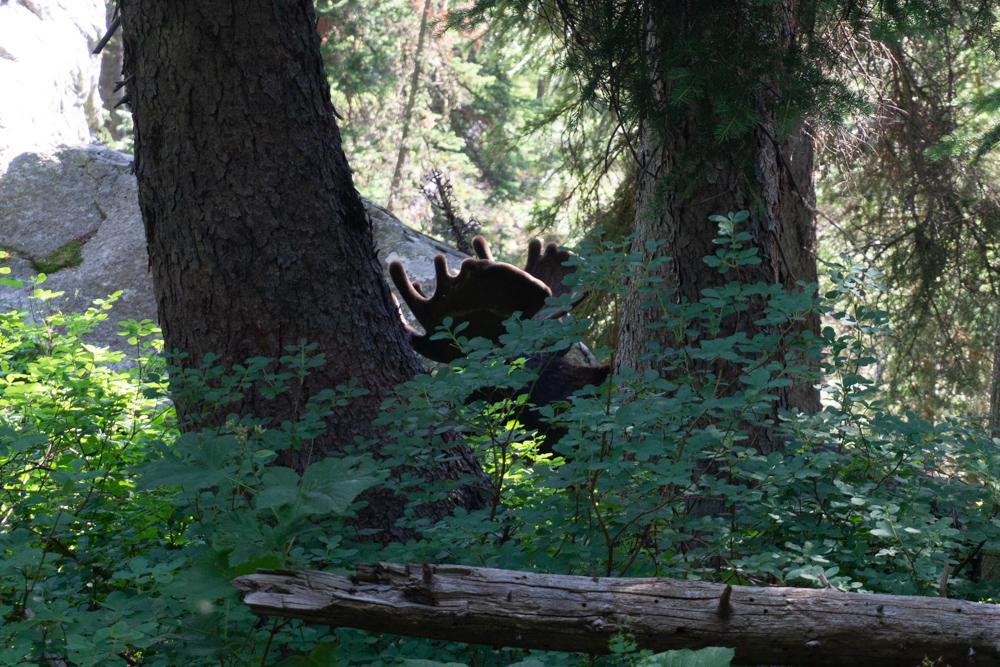
Look at that moose hiding in there!
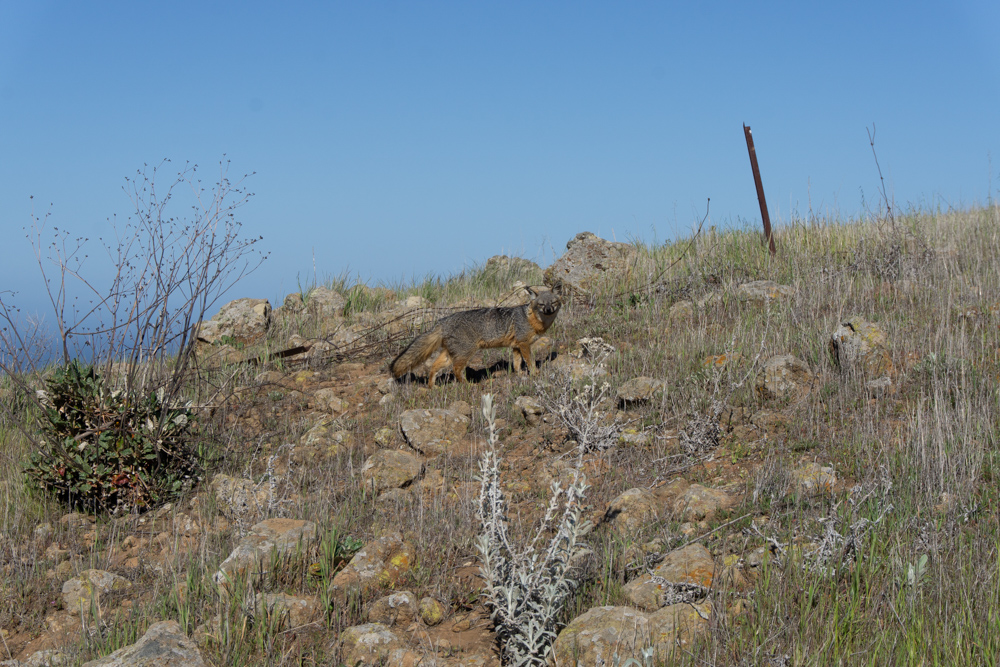
These little island foxes at Channel Islands National Park were more cute than scary.
Bring a friend or two
Again, one of the best things you can do to avoid wildlife is to make a bunch of noise in the backcountry. With a bigger group, you will naturally make a lot more noise. More friends also means more eyes watching out for animals, so your group will be way more prepared for an animal encounter.
You may also want to put your most vigilant hiker at the front of the group. Personally, I tend to zone out when hiking, so Dylan is our leader in thick forest-y areas where we expect to see animals.
Gather the right gear
Some parks let you carry bear spray to protect yourself from grizzly bears. Bear spray is essentially super powerful pepper spray that can be used on all animals, but it’s mostly for big bears. You should only use it as a last resort if an animal is attacking you.
If your park allows bear spray and you decide to buy it, make sure to read all the labels on the bottle and learn how to use it. Here’s a handy video of someone explaining how to use one of the most common bear sprays. Additionally, you should carry the bear spray in a location where you can easily whip it out. I carry mine in one of my backpack side pockets that faces me while hiking.
Also, if you’re flying to your backpacking destination, you’ll have to buy bear spray at your destination because you’re not allowed to bring bear spray on a plane.
While only some parks let you carry bear spray, many parks actually require you to carry a bear box. A bear box is a hard plastic tube with a lid that’s difficult for bears to open. It often has some kind of opening mechanism that relies on having opposable thumbs to open it. In the backcountry, you’ll store all your smelly items in the box and then put the box 100 to 200 feet from your tent, depending on park recommendations. We usually put a couple rocks around the bear box for extra security.
The bear box is meant to keep bears and other forest friends out of your food and toiletries. The goal is to prevent the animals from acquiring a taste for human food and becoming more aggressive towards humans to get the food later. As an added bonus, because you’ll store your food so far away from your tent at night, any wildlife exploring your camp will likely go straight for the tasty-smelling bear box instead of your tent.
Some people also carry “bear bells” to make noise while they hike. There’s a raging debate about whether bear bells make enough noise to alert an animal that you’re on your way or if they’re just annoying. Personally, I still think the best way to make noise is to talk, sing, or shout “Hey Bear!” before you round a corner.
Onto another controversial topic: guns in the backcountry. I’m not the best resource for this one, but I know that some parks let you carry a gun for protection.
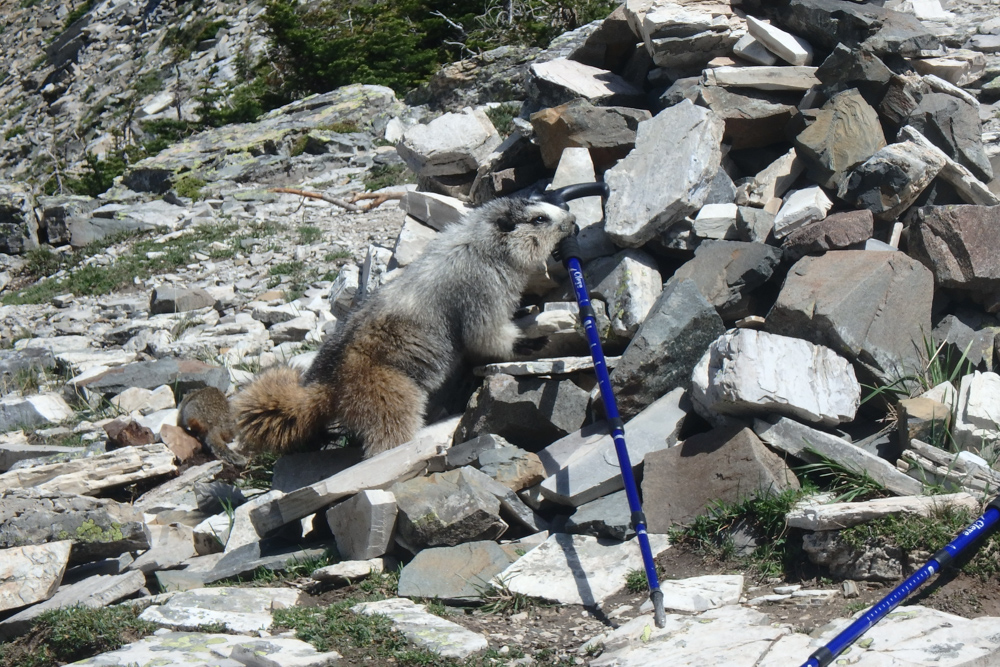
This jerk marmot stole one of our trekking poles. Just after this photo was taken, the marmot ran off with the pole back to its den.
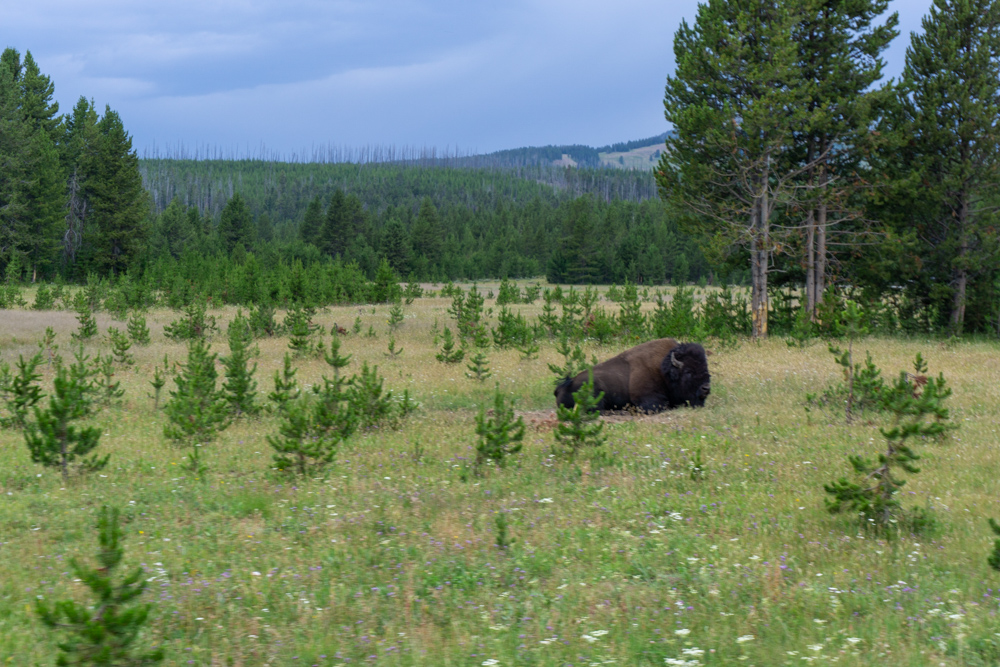
These majestic creatures are all over Wind Cave National Park.
Talk to the park rangers
As always, asking park rangers about wildlife is a good idea. Not only do they have great stories about wildlife in the area, but they can also tip you off on where animals may be hanging out and help you plan your trip to avoid wildlife.
For example, Yosemite National Park has certain areas in the park with larger populations of “bad bears.” These “bad bear” areas are usually places that get a lot of backpacker traffic and as a result the bears in the area have become more accustomed (and bold!) around humans. Some bears will walk right into people’s campsites to grab a snack. Park rangers try their best to discourage this kind of behavior by shooting plastic pellets at the bears to gently teach the bears that humans should be left alone.
Sometimes park rangers will even advise avoiding a certain area or backcountry campsite entirely. When we picked up our backpacking permit for Glacier National Park, one of our designated campsites had a moose carcass close by that a mountain lion was occasionally feasting on. The park ranger changed our itinerary to avoid the campsite, which probably saved us from a potentially dangerous wildlife encounter.
Check the boards at ranger stations
If you’re lucky enough to find a board with wildlife information at the ranger station, you’ll either feel reassured that you’re heading into a wildlife-free zone or you’ll panic extra because there happens to be a puma in your area. You shouldn’t let it worry you too much though, because the boards are often updated with hiker reports and the wilderness is quite roomy, so the animals have a lot of room to roam. The best thing to do with the information from the boards is to use it as a starting point for asking the park rangers about your suspected animals.

This snake surprised us on the Snow Creek trail in Yosemite National Park. Yosemite has some of the most poisonous snakes in North America.

We didn’t find this goat in the backcountry, but I wanted to brag about taking this cool picture.
Stop reading the horror stories
This is just good advice about anything. After you’ve done a bunch of research and gathered all the right gear, it can be tempting to read about the absolute worst thing that can happen: a wildlife attack. There’s plenty of stories online and in magazines about bear or cougar attacks, and if you go looking for them, you’ll always find something to panic about. Wikipedia actually has dedicated pages for chronicling attacks from different animals.
Over the last couple years of consuming outdoor media, I’ve noticed that news about animal attacks is often rare. A couple years ago, I read about a terrifying grizzly bear attack in a Backpacker Magazine article. After that, I had to wait more than a year until the next story about a man in Colorado who battled a cougar in the mountains. If you loosely follow outdoor news and let the stories come to you, you’ll realize that these types of attacks are pretty rare. On the other hand, if you go on a search-binge about animal attacks, especially without noting the dates on the articles, you’ll get a sense that animal attacks happen all the time.
Backpack more
The more you backpack, the more you’ll realize that seeing the scariest types of wildlife is super rare. I’ve backpacked for over six years, been on over fifty trips, and I’ve never seen a bear in the backcountry. And I’m not just talking about grizzly bears — we’ve never even seen a regular black bear in the wild! We’ve also never seen a wolf or a mountain lion. The most dangerous animal we’ve come across is a moose, which was a bit scary because of how humongous moose can be, but we were able to see the moose in time to get to high ground and wait for it to pass. We also saw a bobcat once, but those guys are more cute than scary.
Have any stories about animal encounters in the wild? Leave a comment down below!

